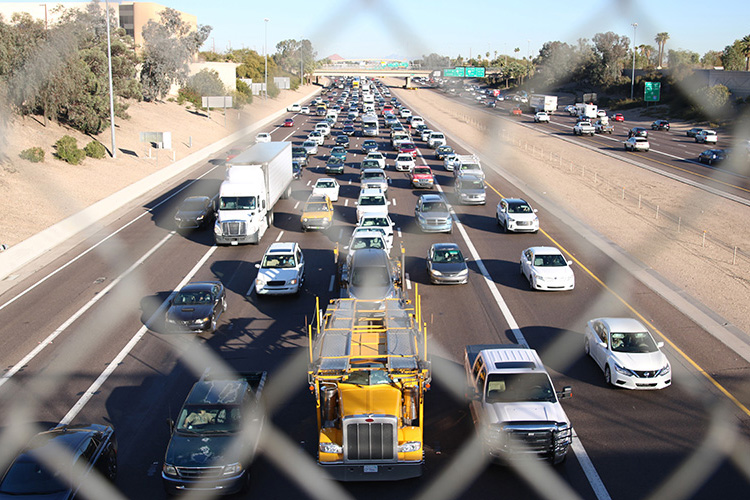The travel reduction program in Maricopa County is working to reduce the number of single-occupant vehicles traveling to and from workplaces in hopes of reducing congestion on the roads and air pollution in the Valley.
Employers and schools that are a part of the program are being asked to reach a 60% rate of single-occupant vehicle travel, meaning that only 60% of the employees should travel alone to the worksite.
Employers who have 50 or more employees at one worksite qualify and can participate in the program. According to the travel reduction program’s report for 2021, there are 1,159 employers and 762,568 employees who are taking part in the program.
While the number of employers decreased by 3.7% there was a 15.8% increase in employees from 2017 to 2021. Additionally, around 1.9 billion commuting miles have been reduced annually through the program, the report stated.
READ ALSO: Here are the 10 best commuter cities near Phoenix
The program does not have a specific goal for the number of employers they want to participate. “We do want any employer that is able to participate, to participate because the overall reduction of air pollution affects everyone in the community,” said Kristen Smith, the travel reduction program supervisor for Maricopa County.
However, this program is not new to the county. It began in February 1989 after Phoenix was out of compliance with the Clean Air Act and needed to decrease air pollution. The program was built as a part of the State’s implementation plan.
“One of the biggest creators of pollution is vehicle driving,” Smith said. “Over the years we’ve had substantial reductions (in single-occupant travel), it has been helpful.”
Typically, people who are commuting to work are driving by themselves. “(If) about 112 people are going to work, about 100 are driving alone and 12 of them are sharing rides,” said Steven Polzin, a research professor at the school of sustainable engineering at Arizona State University.
A lot of employers have put together different ride-sharing programs and options to incentivize other modes of transportation. Some of these incentives include “employer-based programs with free parking if you carpool, discounts for transit fares (and) employer-subsidized transit passes,” Polzin said.
Valley Metro, which works closely to help Maricopa County with this program, has a program called Commute Solutions where they work with employers to help with the company’s plan to reduce travel. Every company that is a part of the program has a transportation coordinator who works with Valley Metro’s team, said Susan Tierney, the communications manager for Valley Metro.
One program that Valley Metro has to help employers decrease single-occupant vehicles is their Vanpool program. There are over 400 vanpools that travel both in and out of the county, Tierney said.
For those looking to create a vanpool, they need to find at least one or two other people to join them and up to 15 others can join.
“That is a program that has been extremely successful, probably one of the most successful (vanpool) programs across the United States,” Tierney said.
For those who used alternative modes of transportation, the report found that 7.2% carpooled and 23.7% worked remotely in 2021, showing the impact that the transition to online working environments due to COVID-19 has had on travel.
“This was an emerging trend before but COVID really ramped it up dramatically, where more activities that you used to have to travel to, you can now carry out virtually or electronically,” Polzin said.




